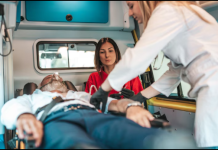As much as you enjoy working out, you can expect sore muscles for a few days afterward. The soreness can range from barely there to very painful, depending on the intensity and duration of the exercise. According to the American College of Sports Medicine, muscle soreness indicates damage to the muscle tissue. When this happens, the body triggers inflammation at the damage site to initiate the repair. Fluid accumulation in the muscles puts more pressure on the damaged area, causing the familiar sensation of pain and tightness. Even though there are no solutions for immediate relief, you can practice some of these tips for easing the soreness and pain:
Keep Yourself Hydrated
Staying hydrated is one of the most important factors for muscle recovery. Water facilitates the movement of bodily fluids that ease inflammation of the muscles, flush out waste products, and deliver essential nutrients to the muscles. According to experts, feeling thirsty is not a good enough indication of dehydration, as you will most likely experience dehydration before you feel thirsty. If your urine is medium or dark yellow, it signals dehydration, while pale yellow urine is a sign of hydration. However, you need to know that certain medications and vitamin supplements may result in urine being darker than normal.
Use a Foam Roller or Massage Gun Immediately After Exercising
You should use a foam roller to release the tension in the connective tissues and muscles arising out of fluid accumulation resulting from exercise. Massages, including foam rollers, help increase the range of motion and reduce muscle soreness by delivering more oxygen and nutrients to the affected area, reducing the feeling of tenderness and swelling. A soft foam roller may be better for beginners because the firmer ones can result in more pressure that may be uncomfortable. You can also use massage guns that deliver rapid vibrations to increase blood circulation in the sore area.
Have a Meal within 30 Minutes of Working Out
According to experts at Winter Park Pain control clinic, you should eat a balanced meal of carbs and protein within half an hour of an intense workout to provide enough nutrition to the muscles for their repair and growth. Follow the map
The recommended portion is 20 to 40 grams of protein and a similar amount of carbohydrates. Protein delivers the essential amino acids required for repairing muscles, while the carbs replenish the energy consumed during the workout. However, you should not stop at the post-workout meal; instead ensure you maintain a consistent intake of protein throughout the day. Nutritionists recommend consuming 1.4 to 2 g of protein per kilogram of body weight with meals at three to four-hour intervals. Your diet should also include vegetables, fruits, and legumes for the required vitamins and minerals.
Conclusion
Getting adequate restful sleep is critical for exercise recovery and easing muscle soreness. Sleeping allows the body to synthesize proteins for repairing damaged tissues. Make sure you exercise lightly after a bout of intense exercise the day before. It will help the blood reach the sore muscles to deliver the required oxygen and nutrients for muscle repair without causing further damage.






Can you be more specific about the content of your article? After reading it, I still have some doubts. Hope you can help me.